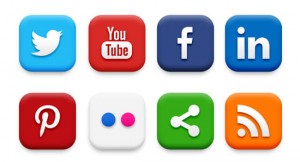We are in the digital age. (Like I needed to tell you that) Everything is on the internet. You want to go on vacation? Internet. You need to book a flight? Internet. You need to book a hotel room? Internet. You need a rental car? Internet. You want to know what movies are showing? Internet. You want to buy movie tickets? Internet. And so on, and on, and on, and on.
Everything happens on the Internet. Why would your business be different?
1. Credibility.
Most consumers shop online and do research online before making purchases. A well designed website is a great way of promoting customer confidence for your company. A website will give your company the competitive online advantage it needs to drive more business.
2. Information.
Your small business needs a quick and efficient way to communicate with your customers and potential customers. Think of your website as your online tri-fold brochure. It is far more cost effective to update information about your products and services on the internet than it would be to re-print all of your marketing materials.
3. Accessibility.
24 hours a day, 7 days a week, 365 days a year (366 days on leap year) – Your website doesn’t take breaks or vacations. When your office is closed, your website will continue to provide your clients and potential clients with the information they might need to really nail that sale home! The reach is limitless.
4. References.
No matter what type of business you are in, your website will be your showcase of work. Pictures, galleries, videos, testimonials, etc. What better way to build credibility and trustworthiness than by providing previous projects and quotes from previous happy clients. Remember the old “references available upon request” tag line? No more. References available on our website!
5. Customer Service.
A website is the perfect avenue to improve and engage the customer service aspect of your business. By providing answers to common questions, customer requests can be more streamlined. Your customer gets the answers he or she is looking for, meanwhile, freeing up valuable time of your employees to deal with other aspects of the business.
6. Growth.
You need to hire new talent for your company. Why pay a company to advertise the position for you when you can do it on your own site, for free! You can use your website to post job opportunities and create forms for potential employees to submit their resume online. No more wasted fax paper printing countless resumes.
TIP: Shop around. Many online do-it-yourself web companies start you off at a low and attractive price but then upsell you on additional services you may or may not need. Get a few quotes from a few web design firms. Don’t be shy about sharing the quote with other design firms to get the best possible deal (Of course, hide the price…) – Make sure you compare apples to apples and don’t invest your life savings into a design firm that promises you the world. Your new website should be simple yet attractive and should complement your business. If the price is too high, or the timeline is too long, look for alternatives.
Related Topic: Why Instagram is Essential for Your Business Marketing Strategy


